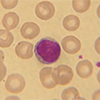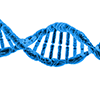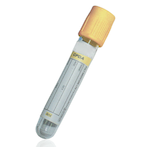
- Home
- Clinical Chemistry Tests
- Iron (Serum)
Iron (Serum)
Specimen Volume
1 mL blood (250ul serum)Sample Preparation
Centrifuge
Turnaround Time
1 daySample Processing In Laboratory
Usual
Sample Stability
3 weeks at 2 - 8ºCGeneral Information
Iron is present in all cells in the human body, and has several vital functions. Examples include as a carrier of oxygen to the tissues from the lungs in the form of hemoglobin, as a transport medium for electrons within the cells in the form of cytochromes, and as an integral part of enzyme reactions in various tissues. Too little iron can interfere with these vital functions and lead to morbidity and death.
Evaluation of iron status can include several tests that are not always run together. These include:
- Serum iron - measures the level of iron in the liquid part of your blood.
- Ferritin - measures the amount of stored iron in your body. Ferritin is the main protein that stores iron, especially in the liver and the bone marrow (the inside cavity in bones, where blood cells are made).
- Total Iron Binding Capacity (TIBC) - measures the amount of transferrin, a blood protein that transports iron from the gut to the cells that use it. Transferrin is produced in relationship to the need for iron; when iron stores are low, transferrin levels increase, while transferrin is low when there is too much iron. Usually about one third of the transferrin is being used to transport iron. Because of this, serum has considerable extra iron-binding capacity, which is the Unsaturated Iron Binding Capacity (UIBC). The TIBC equals UIBC plus the serum iron measurement.
Many factors influence serum iron concentration and TIBC including time of day, menstruation, pregnancy, oral contraceptives, hepatitis & inflammation. Day to day variation is also marked in healthy individuals. Hence, serum iron results must be interpreted with caution.
Although it is an acute phase protein, under normal conditions measurement of serum ferritin is a very sensitive indicator of iron status which is uncomplicated by other concurrent disease.
Patient Preparation
None
Notes
Haemolysis significantly increases results.
In patients treated with desferrioxamine the drug bound serum iron does not react in the test resulting in falsely low values. In this case urine iron should be measured.
Reference Range
Male: 11.6 - 31.3 µmol/L
Female: 9.0 - 30.4 µmol/L
The concentration of iron in serum and plasma is dependent upon diet and is subject to circadian variations. Total iron may be slightly lower in the female population.
Specifications
- EQA Status: UK NEQAS Clinical Chemistry Scheme
- EQAS Scheme: Yes
Link to Further Information
https://pinboard.in/u:duty_biochemist/t:iron/Related Tests
FerritinCreation Date
Monday, 08 August 2011Modification Date
Wednesday, 11 May 2022General Information
Location of Laboratories
Copyright UHB Pathology 2018
Protection of Personal Information – Clinical Laboratory Services comply with the Trust Data Protection Policy and have procedures in place to allow the Directorate and it’s employees to comply with the Data Protection Act 1998 and associated best practice and guidance.
University Hospitals Birmingham medical laboratories at Queen Elizabeth Hospital, Heartlands Hospital, Good Hope Hospital and Solihull Hospital are UKAS (United Kingdom Accreditation Service) accredited to the ISO 15189:2012 standard. For a list of accredited tests and other information please visit the UKAS website using the following link: https://www.ukas.com/find-an-organisation/
- Molecular Pathology is a UKAS accredited medical laboratory No. 8759
- Biochemistry is a UKAS accredited medical laboratory No. 8910
- Haematology and Transfusion is a UKAS accredited medical laboratory No. 8784
- Clinical Microbiology is a UKAS accredited medical laboratory No. 8760
- Cellular Pathology is a UKAS accredited medical laboratory No. 10141
- Musculoskeletal laboratory is a UKAS accredited medical laboratory No. 9897
- Heartlands, Good Hope and Solihull Hospital pathology laboratories are a UKAS accredited medical laboratory No.8217.
Tests not appearing on the UKAS Schedule of Accreditation currently remain outside of our scope of accreditation. However, these tests have been validated to the same high standard as accredited tests and are performed by the same trained and competent staff.
For further test information, please visit the test database: http://qehbpathology.uk/test-database
For further information contact Louise Fallon, Quality Manager, 0121 371 5962
 Biochemistry
Biochemistry Haematology and Transfusion
Haematology and Transfusion Clinical Microbiology (Including Virology)
Clinical Microbiology (Including Virology) Cellular Pathology
Cellular Pathology General Information
General Information Molecular Pathology
Molecular Pathology